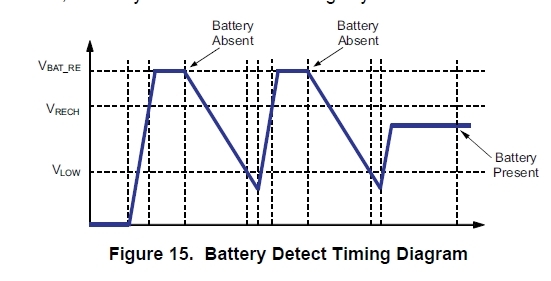Dear expert,
My customer is using BQ24133, but met some problems. They found at 0C degree test (only this temperature point is abnormal), when near to the full charge point, there appeared the charge current transition phenomenon between 0-500mA as below.
The schematic is attached here as well.Copy of 原理图.xlsx
Customer already tried these methods, but didn't work.
1. When charging at 0-45 ° C, TSPin is connected to VREF resistor RT1 to adjust the parameters of GND resistor RT2. The adjustment range of the temperature window has been extended to -5-50 ° C, and it is invalid.
2. For the high and low temperature charging threshold voltages VLTF and VTCO's Full C and Suspended voltage fine-tuning, several combinations of RT1 and RT2 are deduced, and the attempts are invalid;
3. At low temperature, mesure the resistance value of the RTC resistor, cooperate with the adjustment of VLTF and VTCO, and is invalid.
Please kindly share some suggestions. Thanks!



